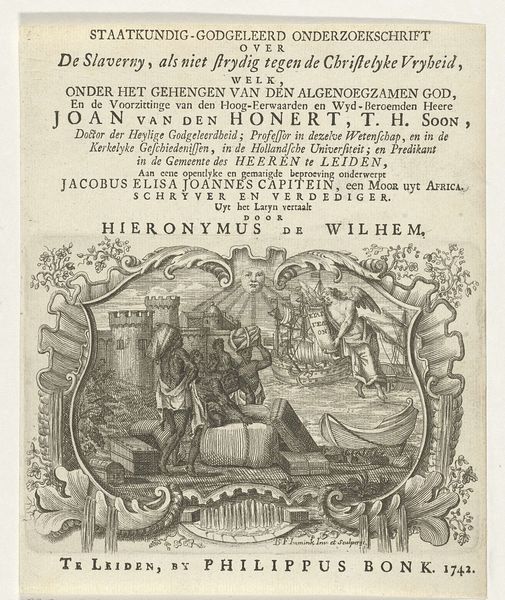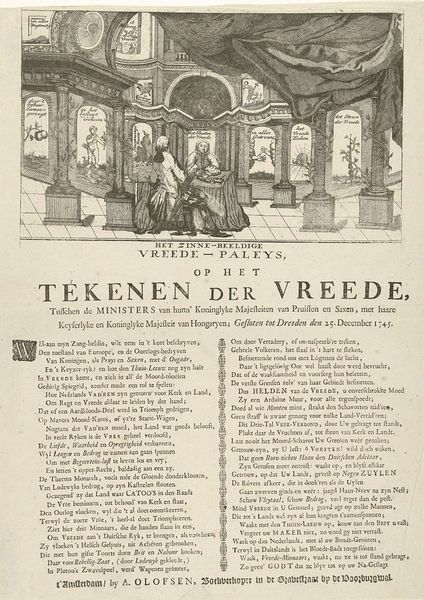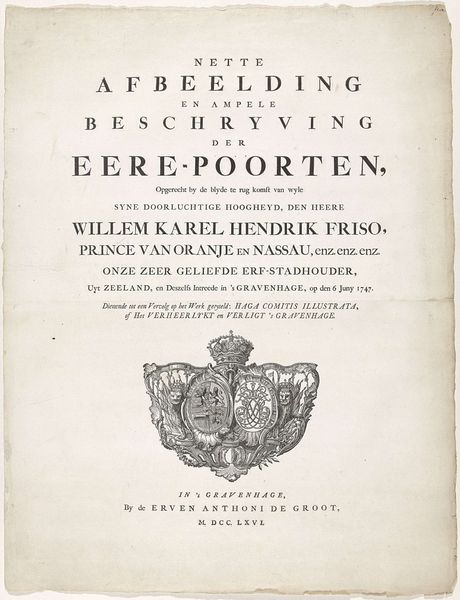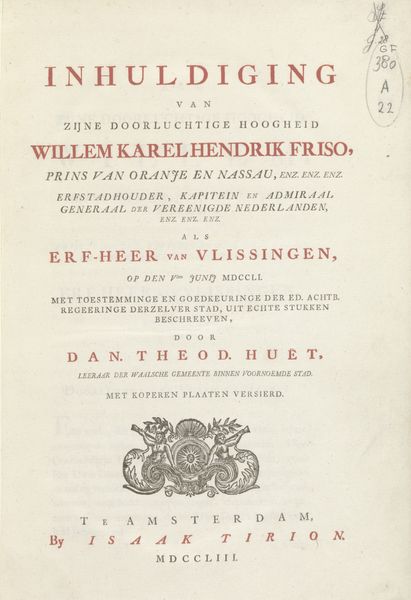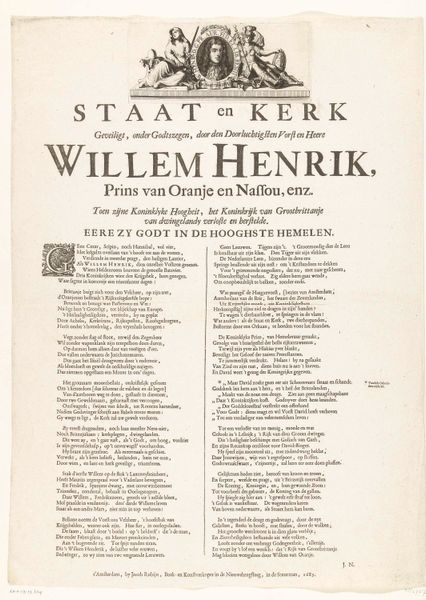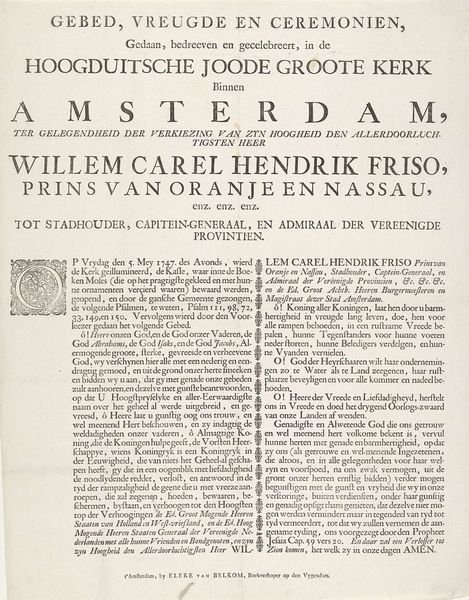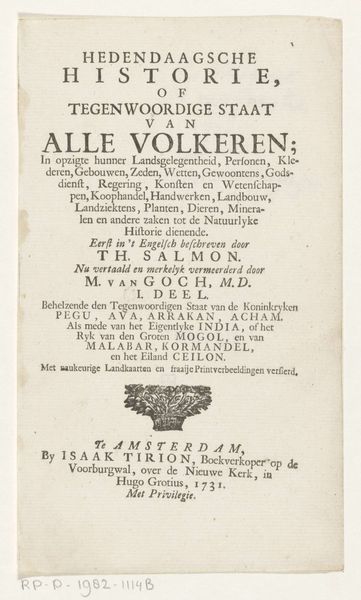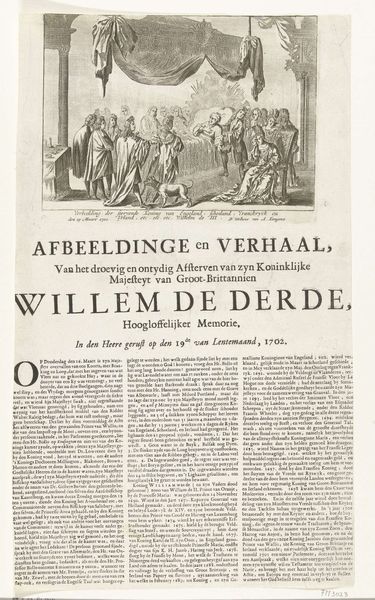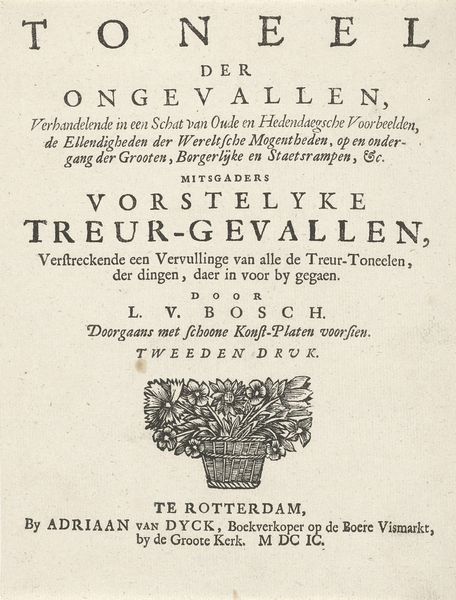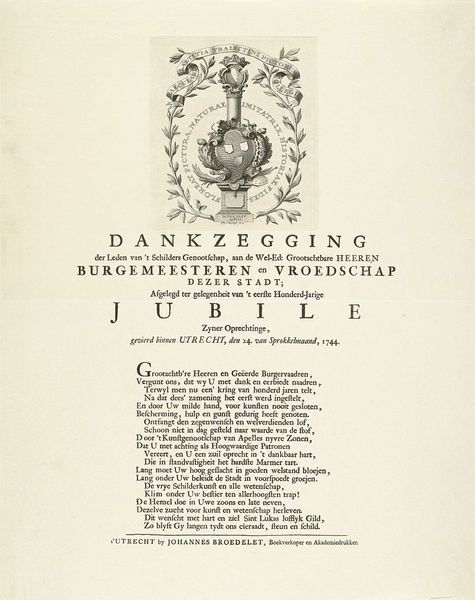
Allegorie op de verheffing van Willem IV, prins van Oranje-Nassau, tot erfstadhouder, 1747 1747
0:00
0:00
jancasparphilips
Rijksmuseum
print, engraving
#
portrait
#
script typeface
#
aged paper
#
allegory
#
baroque
# print
#
old engraving style
#
hand drawn type
#
paragraph style
#
thick font
#
cityscape
#
history-painting
#
handwritten font
#
golden font
#
engraving
#
historical font
#
columned text
Dimensions: height 524 mm, width 385 mm
Copyright: Rijks Museum: Open Domain
Curator: This engraving, created in 1747 by Jan Caspar Philips, is held at the Rijksmuseum. Titled "Allegory on the elevation of Willem IV, Prince of Orange-Nassau, to hereditary stadholder," it’s a fascinating example of Baroque printmaking. Editor: Baroque is right; it's ornate! My first impression is one of grand pronouncements. There's an incredible density of imagery, text, and symbolic elements crammed into this print. Curator: The image serves as a piece of political propaganda, celebrating Willem IV’s rise. Look closely and you'll see an allegory: the Dutch Lion amidst the ruins with the new Stadtholder rising up represented as the shoot of a tree. The whole setting appears to have smoke and clouds swirling around it. Editor: So, it's not just a portrait, but a visually coded argument about legitimacy and hope amidst... what exactly? The broken columns, the fallen lion; what story do they tell? What about the medals arranged on top around the rectangle? Curator: The symbols point to recovery and a renewed future. The broken column signifies past turmoil, the lion represents the Dutch Republic regaining strength, and the emerging tree embodies the hope placed in Willem IV. As for the medals along the top, they are probably showing members of his family. The overall composition creates a sense of optimism through the strategic arrangement of light and shadow, guiding the eye upward. Editor: I see the ascent you mentioned, a purposeful visual strategy employed by the artist. The contrast of dark ruins versus light-filled tree creates a dramatic focal point, while also embedding a certain dynastic symbolism of national strength. Curator: Absolutely, and consider the engraving technique. Philips' masterful lines create texture, depth, and dramatic lighting effects that perfectly serve the allegorical narrative. The inclusion of substantial text further amplifies its message. Editor: Indeed, the density of the text gives you a sense of how important such printed images would have been to disseminate information. Curator: This work reveals how art was deliberately deployed to bolster political power. Editor: The dense and deliberate structure is fascinating. Curator: Agreed, seeing its artistry enmeshed with its historical moment enriches our understanding of this print.
Comments
No comments
Be the first to comment and join the conversation on the ultimate creative platform.

